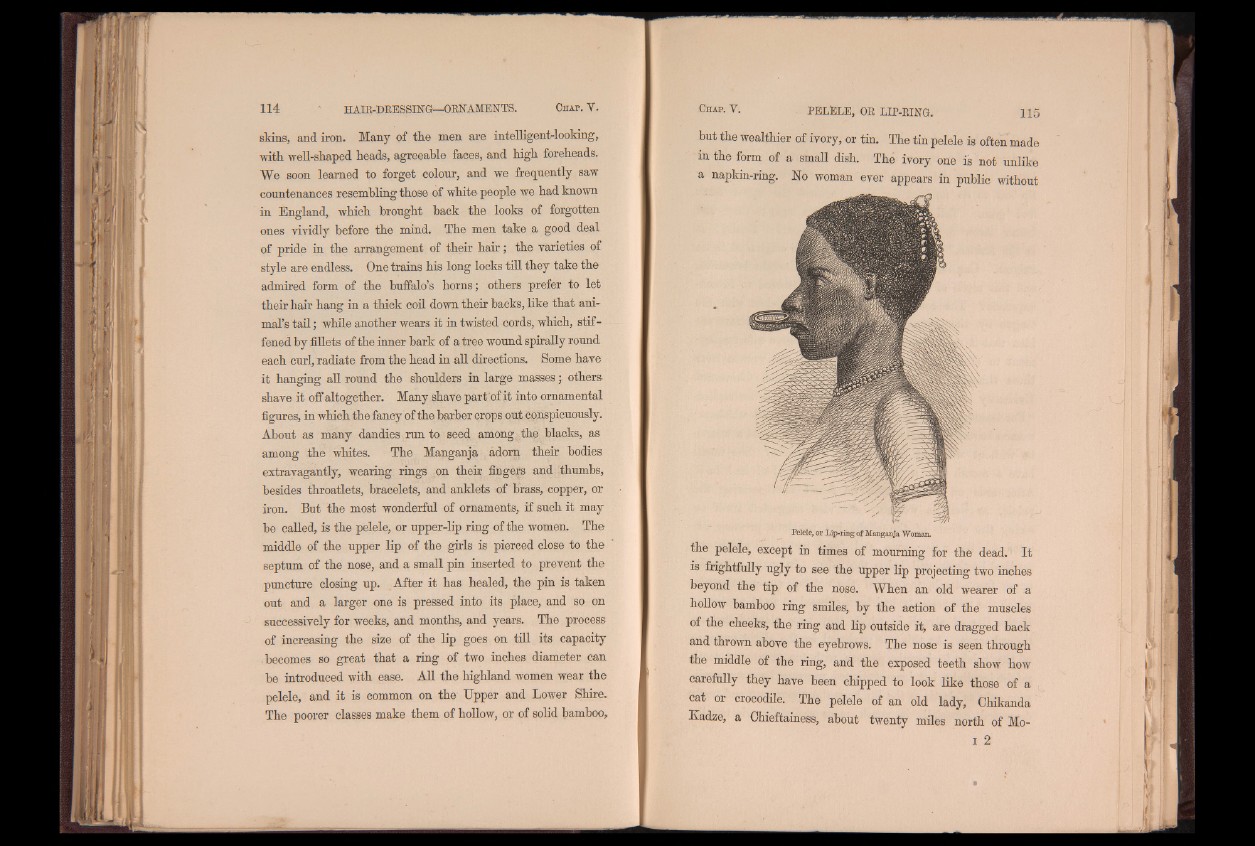
skins, and iron. Many of the men are intelligent-looking,
with well-shaped heads, agreeable faces, and high foreheads.
We soon learned to forget colour, and we frequently saw
countenances resembling those of white people we had known
in England, which brought back the looks of forgotten
ones vividly before the mind. The men take a good deal
of pride in the arrangement of their h a ir; the varieties of
style are endless. One trains his long locks till they take the
admired form of the buffalo’s horns; others prefer to let
their hair hang in a thick coil down their backs, like that animal’s
tail; while another wears it in twisted cords, which, stiffened
by fillets of the inner bark of a tree wound spirally round
each curl, radiate from the head in all directions. Some have
it hanging all round the shoulders in large masses; others
shave it off altogether. Many shave part ofit into ornamental
figures, in which the fancy of the barber crops out conspicuously.
About as many dandies run to seed among the blacks, as
among the whites. The Manganja adorn their bodies
extravagantly, wearing rings on their fingers and thumbs,
besides throatlets, bracelets, and anklets of brass, copper, or
iron. But the most wonderful of ornaments, if such it may
be called, is the pelele, or upper-lip ring of the women. The
middle of the upper lip of the girls is pierced close to the
septum of the nose, and a small pin inserted to prevent the
puncture closing up. After it has healed, the pin is taken
out and a larger one is pressed into its place, and so on
successively for weeks, and months, and years. The process
of increasing the size of the lip goes on till its capacity
becomes so great that a ring of two inches diameter can
be introduced with ease. All the highland women wear the
pelele, and it is common on the Upper and Lower Shire.
The poorer classes make them of hollow, or of solid bamboo,
but the wealthier of ivory, or tin. The tin pelele is often made
in the form of a small dish. The ivory one is not unlike
a napkin-ring. No woman ever appears in public without
Pelele, or Lip-ring of Manganja Woman.
the pelele, except in times of mourning for the dead. I t
is frightfully ugly to see the upper lip projecting two inches
beyond the tip of the nose. When an old wearer of a
hollow bamboo ring smiles, by the action of the muscles
of the cheeks, the ring and lip outside it, are dragged back
and thrown above the eyebrows. The nose is seen through
the middle of the ring, and the exposed teeth show how
carefully they have been chipped to look like those of a
cat or crocodile. The pelele of an old lady, Chikanda
Kadze, a Chieftainess, about twenty miles north of Moi
2